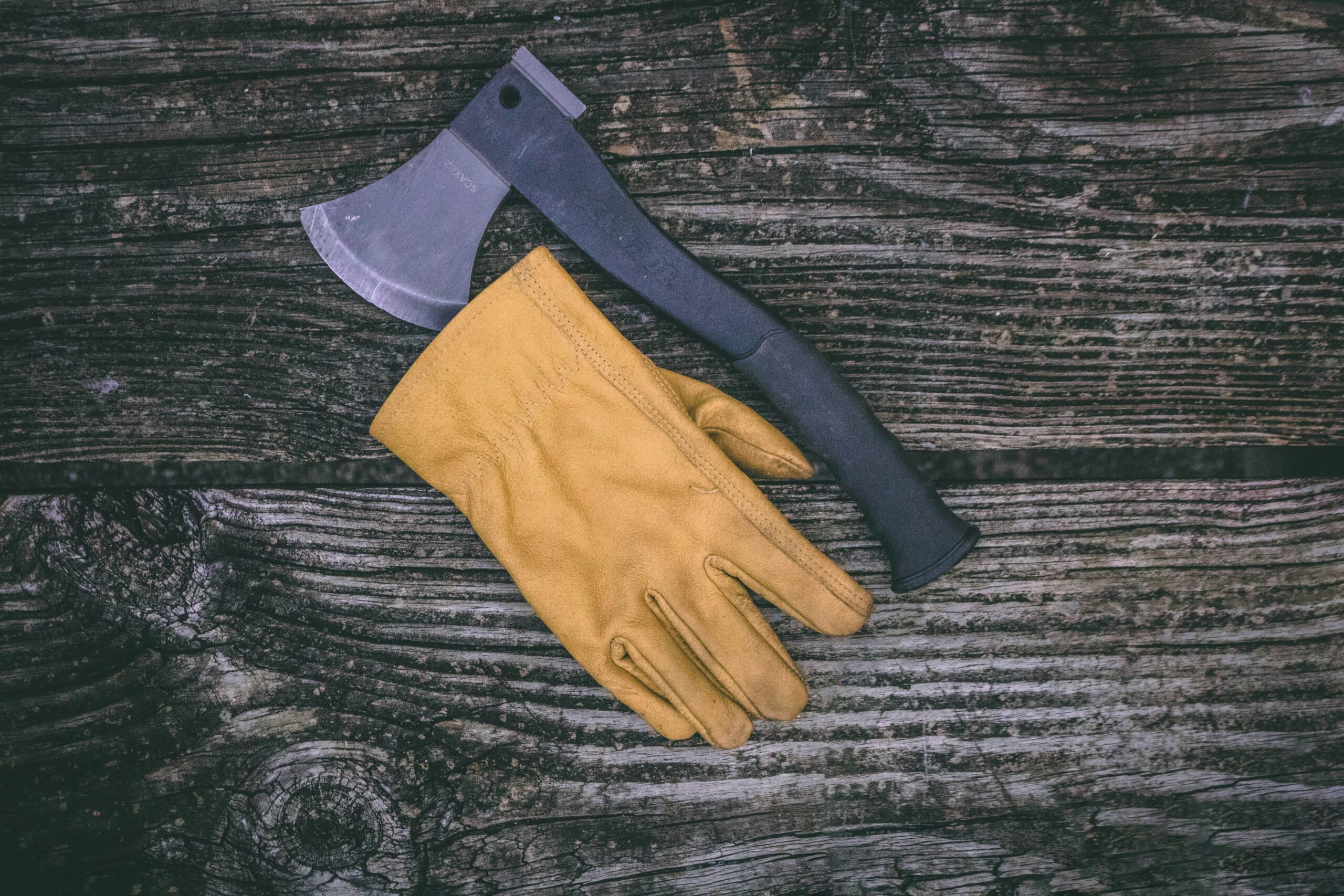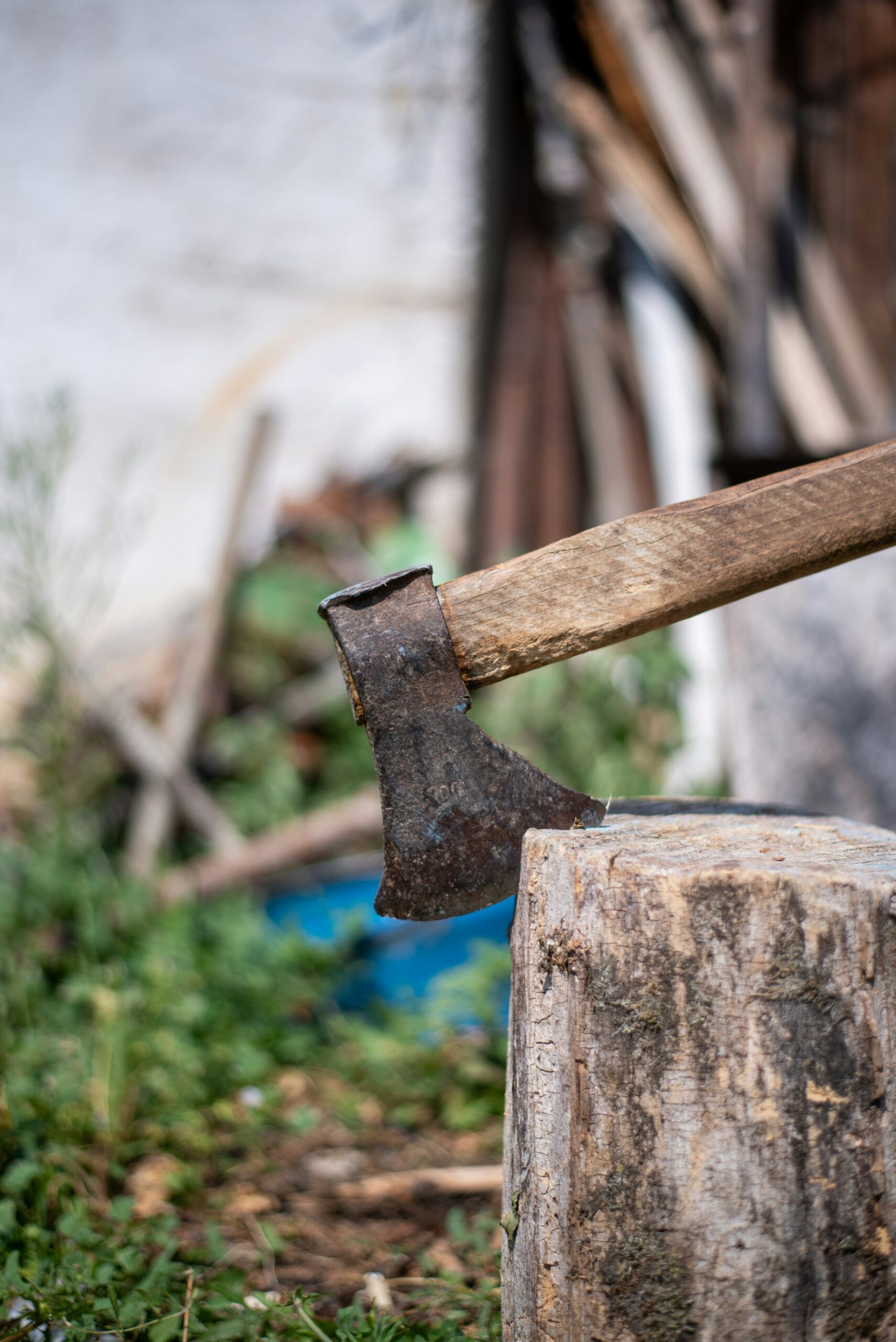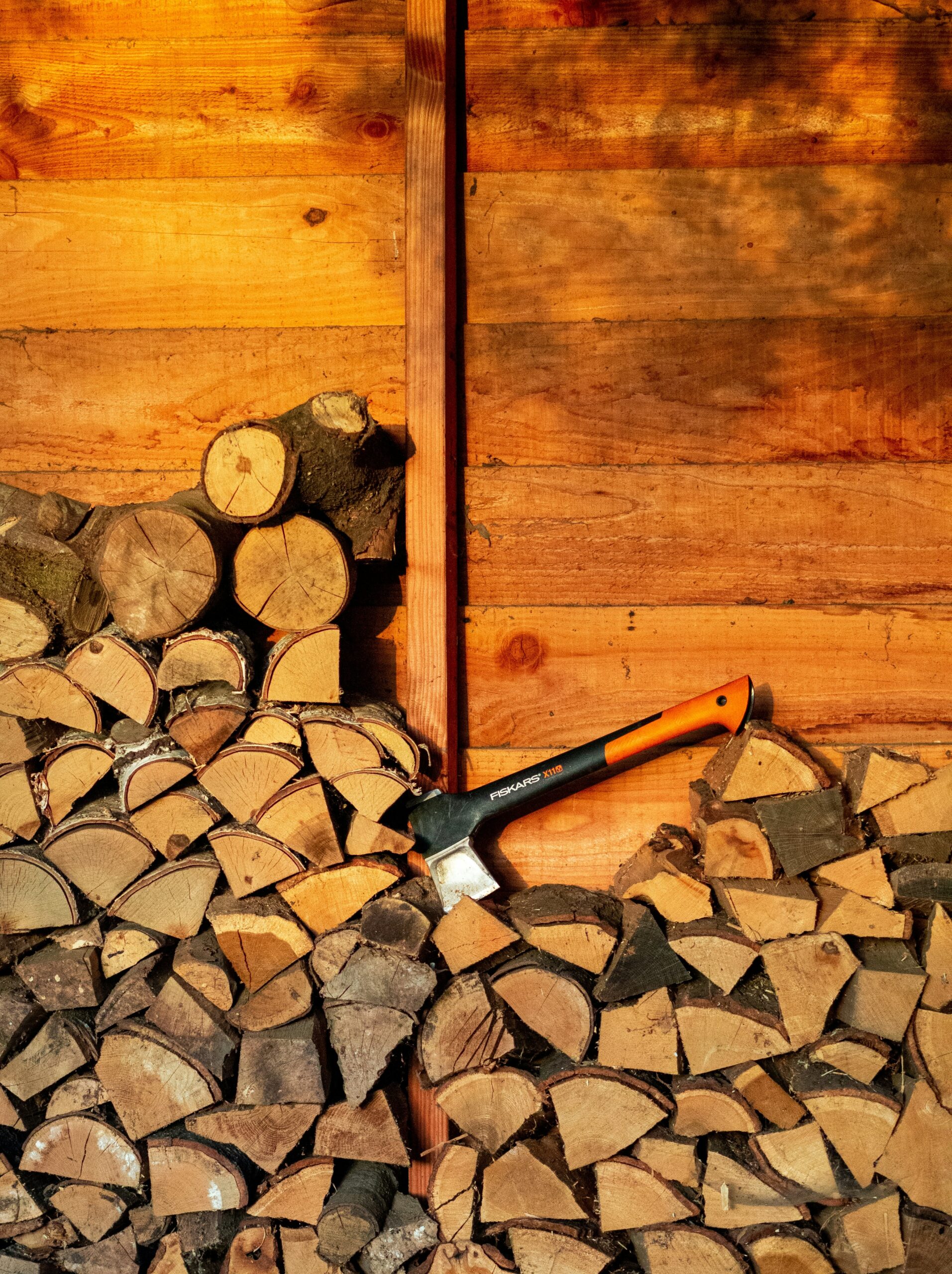Curious about axe throwing but unsure where to start? This guide covers essential beginner techniques, focusing on safety, proper stance, and throwing methods. You’ll learn how to choose the right axe, master the correct grip, and improve your accuracy. By the end, you’ll be confident approaching the target and throwing like a pro. Let’s dive into the basics of this exciting sport and get you throwing axes safely and accurately.
Key Takeaways
- Proper stance and grip form the foundation for accurate axe throwing
- Beginners should start with lighter axes and master the two-handed overhead throw technique
- Smooth release and follow-through are crucial for improving accuracy and consistency
- Adjusting the throwing technique for distance and rotation helps achieve optimal axe flight
- Regular practice drills targeting specific skills enhance overall throwing performance
Understanding the Basics of Axe Throwing

Understanding the basics of axe throwing is crucial for beginners. This section covers the objective of axe throwing, different types of axes suitable for newcomers, and what to expect at an axe-throwing venue. These fundamentals will help first-timers prepare for their initial axe-throwing experience and lay the groundwork for developing proper technique.
The Objective of Axe Throwing
The primary objective of axe throwing is to hit the target precisely and accurately. Throwers aim to stick the axe blade into specific scoring zones on a wooden target board, typically set at a distance of about 12 to 15 feet. Points are awarded based on where the axe lands, with the bullseye offering the highest score. This challenging sport tests hand-eye coordination, focus, and technique, making it an exciting activity for beginners to master.
Different Types of Axes for Beginners
Beginners should start with lighter, balanced axes designed for throwing. These typically weigh between 1.5 to 2 pounds and have a handle length of 14 to 19 inches. Two common types for novices are the traditional camp axe and the modern throwing axe, both featuring a single blade. The camp axe offers versatility, while the throwing axe is specifically crafted for accuracy in competitive settings.
What to Expect at an Axe-Throwing Venue
At an axe-throwing venue, beginners can expect a safety briefing, instruction on proper throwing technique, and supervised practice sessions. Venues typically provide axes and targets, with lanes separated by fencing or netting for safety. Staff members often offer guidance and tips to help newcomers improve their throws. The atmosphere is usually casual and fun, making it an enjoyable experience for first-time throwers.
Essential Safety Guidelines for First-Timers

Safety is paramount in axe throwing. First-timers should prioritize proper attire, protective equipment, and safe axe handling. Understanding range rules and etiquette is crucial for a safe and enjoyable experience. These guidelines ensure personal safety and respect for others at the venue, allowing beginners to concentrate on improving their technique.
Proper Attire and Personal Protective Equipment
Proper attire for axe throwing includes closed-toe shoes and comfortable, non-restrictive clothing. Loose items like scarves or dangling jewelry should be removed for safety. While personal protective equipment is not typically required, some venues may provide or recommend safety glasses. First-timers should check with their chosen venue for specific dress codes and safety requirements before their visit.
Safe Handling and Transportation of Axes
Safe handling of axes is crucial for beginners. When not in use, axes should be carried with the blade pointing downward and away from the body. During transportation, axes should be securely stored in a protective sheath or case. At the venue, throwers must wait for the all-clear signal before retrieving their axe from the target, ensuring the throwing area is clear of other participants.
Range Rules and Etiquette
Range rules and etiquette are essential for a safe and enjoyable axe-throwing experience. Beginners should always follow the venue’s specific guidelines, which typically include staying behind the throwing line until instructed otherwise, not crossing into other throwers’ lanes, and respecting fellow participants. It’s crucial to listen to staff instructions and refrain from throwing until the range is clear and safe. Proper etiquette also involves waiting for one’s turn, being mindful of noise levels, and promptly reporting any safety concerns to staff members.
Choosing the Right Axe for Beginners

Selecting the right axe is crucial for beginners in axe throwing. This section covers the ideal weight and balance, appropriate handle length, and axe maintenance. Understanding these factors helps novices choose a suitable axe, enhancing their throwing accuracy and overall experience.
Ideal Axe Weight and Balance
The ideal axe weight ranges from 1.5 to 2 pounds for beginners, balancing control and throwing power. A well-balanced axe, with its center of gravity near the head, allows for smoother rotation during the throw. Novice throwers should start with lighter axes to develop proper form and technique before progressing to heavier options.
Selecting the Appropriate Handle Length
Handle length plays a crucial role in axe throwing for beginners. Most novice throwers find success with handles measuring between 14 to 19 inches. This range allows for comfortable grip and control while providing sufficient leverage for a smooth throw. Beginners should experiment with different handle lengths within this range to find the one that feels most natural and provides the best balance for their throwing style.
Maintaining Your Axe for Optimal Performance
Proper axe maintenance ensures optimal performance and longevity. Beginners should regularly clean their axes with a damp cloth, removing any dirt or debris. Applying a thin coat of mineral oil to the blade prevents rust and keeps the metal in good condition. Sharpening the blade periodically with a file or whetstone maintains its cutting edge, improving accuracy and stick rate during throws.
Learning the Correct Stance and Grip

Mastering the correct stance and grip is fundamental for beginners in axe throwing. This section covers positioning feet for stability, gripping the axe effectively, and aligning the body with the target. These techniques form the foundation for accurate throws and consistent performance, helping novices develop proper form from the start.
Positioning Your Feet for Stability
Proper foot positioning forms the foundation of a stable axe-throwing stance. Throwers should stand with their feet shoulder-width apart, perpendicular to the target. The dominant foot should be slightly forward, aligning with the throwing arm. This stance provides balance and allows for a smooth, controlled throw. Beginners should practice this positioning until it feels natural, as it sets the stage for consistent throws:
- Feet shoulder-width apart
- Body perpendicular to target
- Dominant foot slightly forward
- Alignment with throwing arm
Gripping the Axe Effectively
Effective axe gripping is crucial for accurate throws. With a firm but relaxed grip, beginners should hold the axe at the bottom of the handle with their dominant hand. The thumb and index finger form a “V” shape, pointing towards the axe head. This grip allows for better control and a smoother release during the throw. Proper grip techniques include:
- Hold at the bottom of the handle
- Use dominant hand
- Form a “V” shape with thumb and index finger
- Maintain a firm but relaxed grip
Aligning Your Body With the Target
Proper body alignment with the target is essential for accurate axe throwing. Throwers should stand sideways to the target, with their non-throwing shoulder pointing towards it. This positioning allows for a natural throwing motion and helps maintain balance throughout the throw. Beginners should consistently practice aligning their bodies to develop muscle memory and improve their accuracy.
Step-by-Step Throwing Techniques for Newcomers

This section outlines essential throwing techniques for axe-throwing beginners. It covers the two-handed overhead throw, the one-handed overhand throw, and tips for a smooth release. These step-by-step guides help newcomers develop proper form and improve their accuracy, providing a solid foundation for successful axe throwing.
Performing the Two-Handed Overhead Throw
The two-handed overhead throw is a fundamental technique for beginners in axe throwing. This method provides stability and control, making it easier for newcomers to develop proper form. To perform this throw, the thrower starts with both hands gripping the axe handle near the bottom, raising it overhead, and then bringing it forward in a smooth, controlled motion. The key steps for executing a two-handed overhead throw are:
- Grip the axe with both hands near the handle’s bottom
- Raise the axe overhead, keeping arms straight
- Lean slightly back, shifting weight to the rear foot
- Step forward with the lead foot as you begin the throw
- Bring the axe forward in a smooth arc
- Release the axe when arms are parallel to the ground
- Follow through with the motion after the release
Mastering the One-Handed Overhand Throw
The one-handed overhand throw is a more advanced technique that beginners can progress to after mastering the two-handed throw. This method requires more control and finesse, allowing for greater throwing speed and accuracy. To perform this throw, the thrower grips the axe with their dominant hand, raises it overhead, and releases it in a smooth, forward motion. The key steps for executing a one-handed overhand throw are:
Tips for a Smooth Release
A smooth release is crucial for accurate axe throwing. Beginners should maintain a relaxed grip and release the axe at the right moment. The key is to let the axe naturally roll off the fingertips when the throwing arm is parallel to the ground. This technique ensures a consistent rotation and improves the chances of the axe sticking to the target. Here are some tips for achieving a smooth release:
- Keep a relaxed grip throughout the throw
- Release when the arm is parallel to the ground
- Let the axe roll off the fingertips naturally
- Maintain a fluid motion from start to finish
- Practice the release point consistently
Strategies to Improve Accuracy and Consistency

Improving accuracy and consistency in axe throwing requires a focus on key techniques. This section covers follow-through, distance and rotation adjustments, and purposeful practice drills. These strategies help beginners refine their throwing mechanics, adapt to different target distances, and develop muscle memory for more precise throws.
Focusing on Your Follow-Through
Proper follow-through is crucial for improving accuracy in axe throwing. After releasing the axe, beginners should continue throwing, allowing their arm to complete its arc. This follow-through helps maintain a smooth, consistent throw and ensures the axe rotates correctly in flight. Focusing on this technique can significantly enhance throwing precision and increase the chances of sticking the axe to the target.
Adjusting for Distance and Rotation
Adjusting for distance and rotation is essential for accurate axe throwing. Beginners should experiment with their throws to find the optimal number of rotations for different distances. Most throwers aim for one full rotation for standard targets set 12 to 15 feet away. Adjustments can be made by altering the release point or changing the throwing speed. Here’s a guide for common adjustments:
Practicing With Purposeful Drills
Purposeful drills help beginners improve their axe-throwing accuracy and consistency. Throwers can practice hitting specific target zones, starting with larger areas and gradually focusing on smaller ones. Another effective drill involves throwing at different distances to develop adaptability. Beginners should also practice their stance and grip without actually throwing, building muscle memory for proper form.
Conclusion
Mastering the basics of axe throwing is essential for beginners to ensure safety, improve accuracy, and enjoy the sport. Proper stance, grip, and throwing techniques form the foundation for successful throws, while selecting the right axe and understanding range rules enhance the overall experience. Consistent practice, focusing on follow-through, and adjusting for distance and rotation are key strategies to improve accuracy and consistency. By following these beginner axe-throwing tips, first-timers can quickly develop their skills, boost their confidence, and fully appreciate this exciting and challenging sport.

